Compression is a very common and useful signal processing device. By setting an amplitude threshold and a ratio, the dynamic range of a signal can be compressed into a smaller range. In audio, this is useful when a sound might push the boundaries of a DAC or when mixing to enable more control over the track in terms of its amplitude. The common attributes of a compressor are given below:
| Parameter | Description |
|---|---|
| Threshold | The level at which the compressor “kicks in”. |
| Ratio | TThe ratio of compression. For example, 2:1 compression means that for every unit of amplitude the signal exceeds the threshold, it is diminished by a factor of two. |
| Attack Time | The time it takes for the compressor to reach full compression. This is useful since it avoids creating amplitude artifacts with quickly changing signals |
| Release Time | Same as the above but for the time it takes the compressor to return to normal; i.e. no amplitude correction |
| Makeup Gain | The amount of gain to apply post-compression. |
| RMS Size | In an RMS compressor, the RMS size is often controllable. |
The basic form of a compressor is an envelope follower whose output is passed to a function that checks whether or not the amplitude has exceeded the threshold and if so, by what amount. If the amplitude exceeds the threshold, an amplitude correction is multiplied to the signal using the ratio. After compression is applied, the makeup gain is applied and the signal is sent out. In the below example of an RMS compressor, the smoothing of the attack and release are accomplished with the use of a single-pole low pass filter. Without smoothing, amplitude artifacts would be introduced into the output. It is also assumed that one has an RMS function (`getRMS()) elsewhere.
float gain = 0; // initial value
float diff = 0; // initial value
RMSCompressor(float *input, float *output, long samples, float threshold = 0.707, float ratio = 2, float attTime = 0.003, float relTime = 0.03, float makeupGain = 0, int rmsSize = 64)
{
// the coefficient for the attack
double attCoeff = 1 - exp(-1/(SAMPLERATE*attTime));
// the coefficient for the release
double relCoeff = 1 - exp(-1/(SAMPLERATE*relTime));
// get the ratio factor
float ratioFac = 1 - (1/ratio);
// a buffer for RMS calculations
float *rmsBuff[] = new float[rmsSize];
for(sample = 0; sample < samplesPerBlock; sample++)
{
// get the RMS amplitude
rmsAmp = getRMS(*(input+sample), rmsBuff);
diff = *(input+sample) - threshold; // get the difference
if(diff>1.0) diff = 1.0;
if(diff>0)
{
// the signal exceeds the threshold.
// Apply compression using a single-pole low pass
// to smooth out the attack.
gain = gain + (attCoeff*((1-(diff*ratioFac))-gain));
}
else
{
// else we need to return to normal
// a gain of 1 (no correction)
gain = gain + (relCoeff*(1-gain));
}
*(output+sample) = gain * *(input+sample) * (1+makeupGain);
}
}
When applied to a signal, the dynamic range is compressed. The image below is an overlay of an original signal (purple) and a compressed version (green) sampled at 44.1kHz. Note how the amplitude peaks on the compressed version are lower than the original. The following image shows the amplitude correction applied to the signal to create the compressed version. The compressor used was 5:1 with a threshold of 0.5, an attack time of 0.003, a release time of 0.03, and a makeup gain of 0.
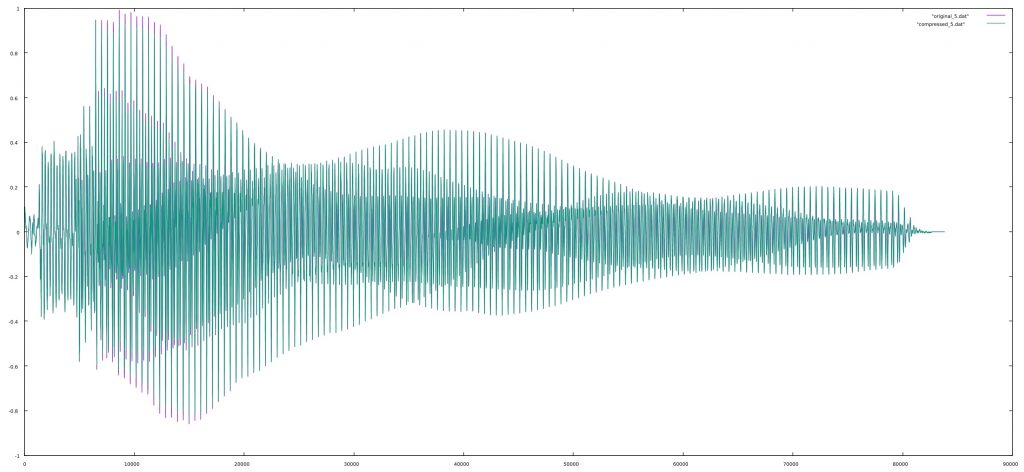
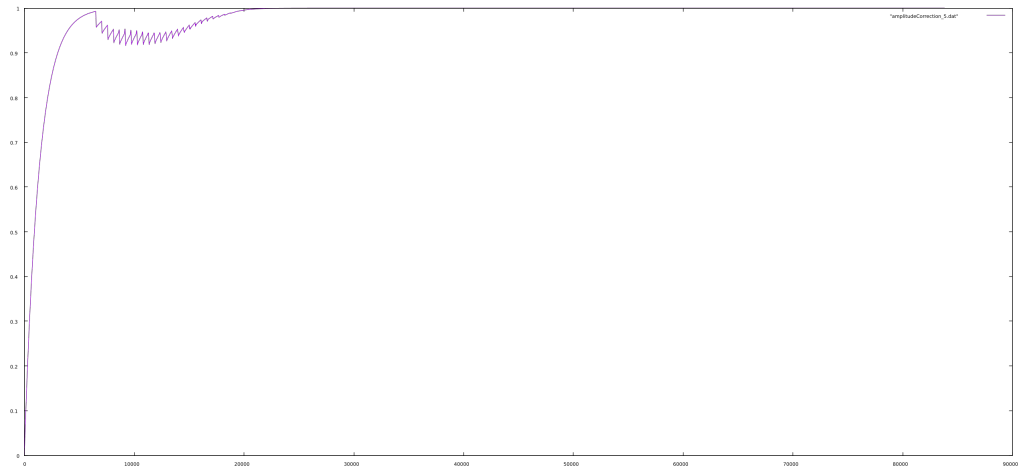
More extreme compression with the threshold set to 0.2 and the ratio as 50:1.
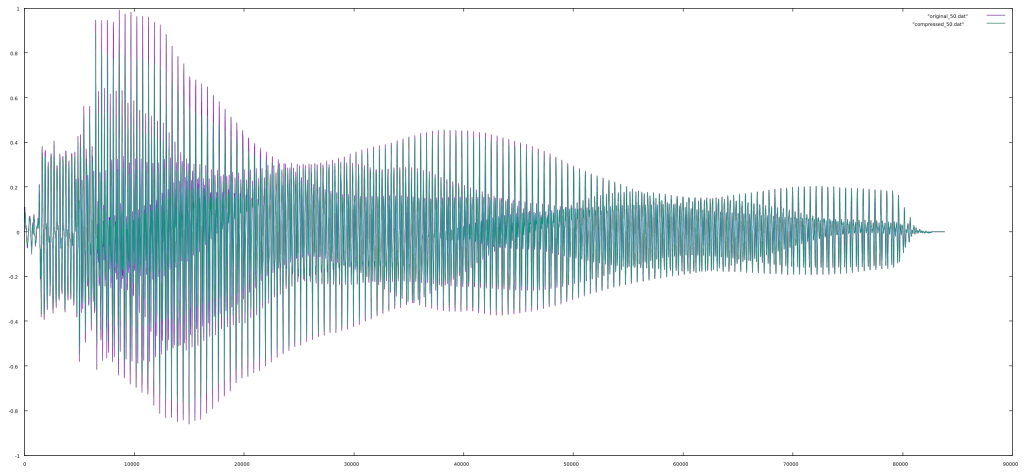
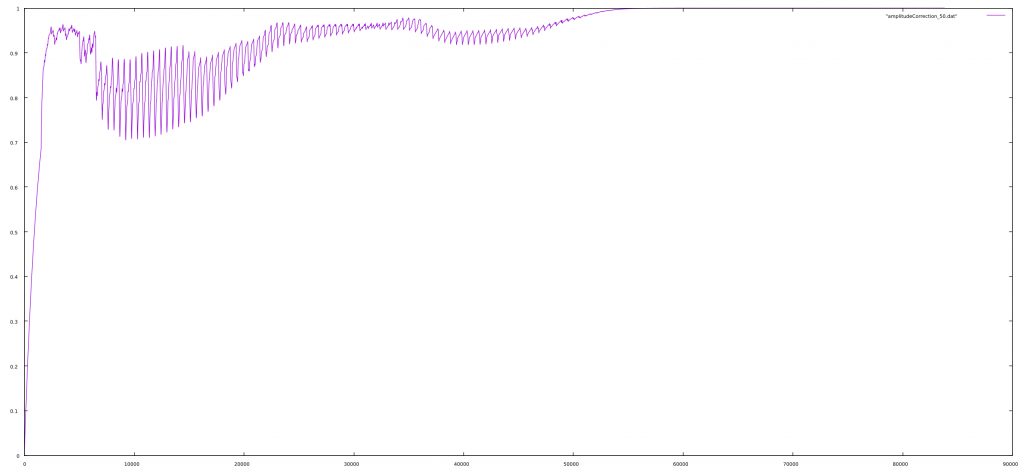
And the same again but with the attack time set to 0.03 and the release time to 0.3.
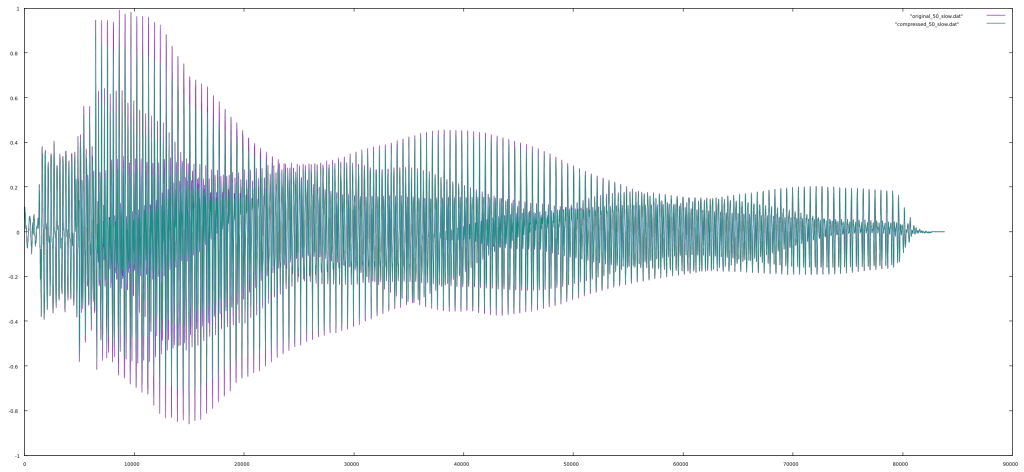
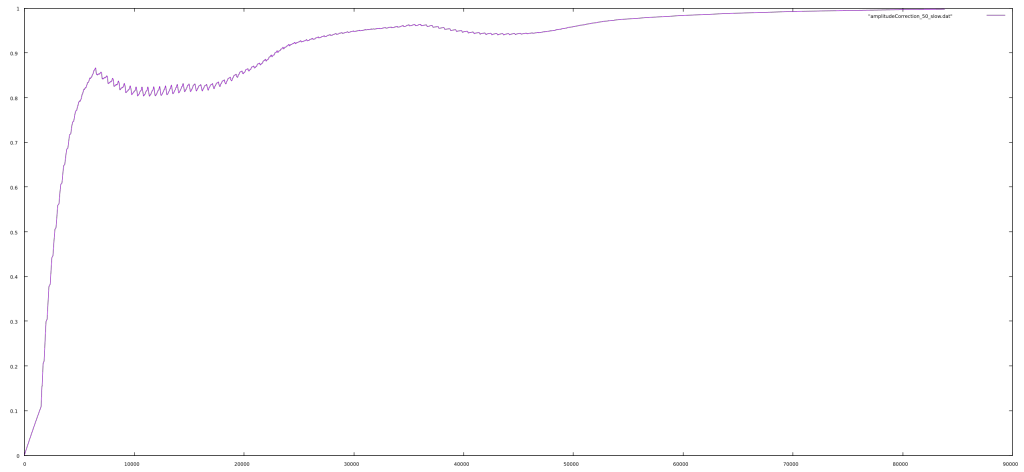
The Limiter
A limiter can be thought of as a type of compressor with certain settings such that it only makes itself known at the extreme ends of amplitude and in a very high degree. This is usually intended for peak reduction, but also for leveling a mix in mastering. Typical parameters might be a threshold of 0.9 linear amplitude, a ratio of 40, and very fast attack and release.
